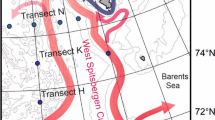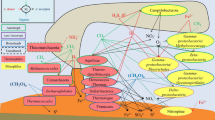Abstract
Diversity of the microbial community in the Zharkent geothermal hot spring, located in the southeastern region of Kazakhstan, was assessed using both culture-dependent and -independent approaches. Shotgun metagenomic sequencing of DNA extracted from the spring water yielded 11,061,725 high-quality sequence reads, totaling >1,67 Gb of nucleotide sequences. Furthermore, water samples were enriched in nutrient broth at varying high temperatures, and colonies isolated by being streaked onto nutrient agar. Finally, DNA extraction and amplification, as well as sequencing and phylogenetic analysis, were conducted. Bacteria constituted more than 99.97% of the total prokaryotic abundance, with Archaea contributing only an extremely small component; Firmicutes, Proteobacteria, and Actinobacteria dominated the community. At genus level, Firmicutes reads affiliated with Desmospora, Parageobacillus, Paenibacillus, and Brevibacillus, accounting for more than 60% of total prokaryotic abundance. Eight morphologically distinct, aerobic, endospore-forming thermophilic bacteria were recovered; isolates differed significantly in substrate utilization patterns, as well as their production of thermophilic, extracellular, hydrolytic enzymes for degradation of starch, lipids, cellulose, and protein. Five strains could degrade all four macromolecular types at temperatures ranging from 55 to 75 °C. Phylogenetic analyses based on 16S rRNA gene sequences placed all isolates into the genus Geobacillus with some of them possibly representing novel species. The results indicate that this hot spring represents a rich source of novel thermophilic bacteria and potentially useful thermostable enzymes.



Similar content being viewed by others
Data Availability
The datasets generated during and/or analyzed during the current study are available in the GenBank repository, https://www.ncbi.nlm.nih.gov/genbank/. Any data generated or analyzed during this study that are not included in the published article will be available from the corresponding author on reasonable request.
References
Raddadi N, Cherif A, Daffonchio D, Neifar M, Fava F (2015) Biotechnological applications of extremophiles, extremozymes and extremolytes. Appl Microbiol Biotechnol 99(19):7907–7913. https://doi.org/10.1007/s00253-015-6874-9
DeCastro ME, Rodriguez-Belmonte E, Gonzalez-Siso MI (2016) Metagenomics of thermophiles with a focus on discovery of novel thermozymes. Front in Microbiol 7:1521. https://doi.org/10.3389/fmicb.2016.01521
Khalil A (2011) Screening and characterization of thermophilic bacteria (lipase, cellulase and amylase producers) from hot springs in Saudi Arabia. J Food Agric Environ 9(2):672–675. https://doi.org/10.1234/4.2011.2187
Khalil A (2011) Isolation and characterization of three thermophilic bacterial strains (lipase, cellulose and amylase producers) from hot springs in Saudi Arabia. Afr J of Biotechnol 10(44):8834–8839. https://doi.org/10.5897/AJB10.1907
Panda MK, Sahu MK, Tayung K (2013) Isolation and characterization of a thermophilic Bacillus sp. with protease activity isolated from hot spring of Tarabalo, Odisha, India. Iran J Microbiol 5(2):159–165
Reysenbach AL, Wickham GS, Pace NR (1994) Phylogenetic analysis of the hyperthermophilic pink filament community in Octopus Spring, Yellowstone National Park. Appl Environ Microbiol 60(6):2113–2119. https://doi.org/10.1128/AEM.60.6.2113-2119.1994
Slobodkin A, Reysenbach AL, Mayer F, Wiegel J (1997) Isolation and characterization of the homoacetogenic thermophilic bacterium Moorella glycerini sp. nov. Int J Syst Bacteriol 47(4):969–974. https://doi.org/10.1099/00207713-47-4-969
Slobodkin A, Reysenbach AL, Strutz N, Dreier M, Wiegel J (1997) Thermoterrabacterium ferrireducens gen. nov., sp. nov., a thermophilic anaerobic dissimilatory Fe(III)-reducing bacterium from a continental hot spring. Int J Syst Bacteriol 47(2):541–547. https://doi.org/10.1099/00207713-47-2-541
Huber R, Eder W, Heldwein S, Wanner G, Huber H, Rachel R et al (1998) Thermocrinis ruber gen. nov., sp. nov., a pink-filament-forming hyperthermophilic bacterium isolated from Yellowstone National Park. Appl Environ Microbiol 64(10):3576–3583. https://doi.org/10.1128/AEM.64.10.3576-3583.1998
Reysenbach AL, Ehringer H, Hershberger K (2000) Microbial diversity at 83 degrees C in Calcite springs, Yellowstone national park: another environment where the aquificales and “Korarchaeota” coexist. Extremophiles 4(1):61–67. https://doi.org/10.1007/s007920050008
Adiguzel A, Ozkan H, Baris O, Inan K, Gulluce M, Sahin F (2009) Identification and characterization of thermophilic bacteria isolated from hot springs in Turkey. J Microbiol Methods 79(3):321–328. https://doi.org/10.1016/j.mimet.2009.09.026
Maugeri TL, Gugliandolo C, Caccamo D, Stackebrandt E (2001) A polyphasic taxonomic study of thermophilic bacilli from shallow, marine vents. Syst Appl Microbiol 24(4):572–587. https://doi.org/10.1078/0723-2020-00054
Derekova A, Mandeva R, Kambourova M (2008) Phylogenetic diversity of thermophilic carbohydrate degrading bacilli from Bulgarian hot springs. World J Microbiol Biotechnol 24:1697–1702. https://doi.org/10.1007/s11274-008-9663-0
Sievert SM, Ziebis W, Kuever J, Sahm K (2000) Relative abundance of archaea and bacteria along a thermal gradient of a shallow-water hydrothermal vent quantified by rRNA slot-blot hybridization. MicroSoc 146(6):1287–1293. https://doi.org/10.1099/00221287-146-6-1287
Verma A, Gupta M, Shirkot P (2014) Isolation and characterization of thermophilic bacteria in natural hot water springs of Himachal Pradesh (India). Bioscan 9:947–952. https://doi.org/10.1007/s13213-014-0984-y
Niederberger TD, Ronimus RS, Morgan HW (2008) The microbial ecology of a high-temperature near-neutral spring situated in Rotorua New Zealand. Microbiol Res 163(5):594–603. https://doi.org/10.1016/j.micres.2006.09.001
López-López O, Cerdán ME, González-Siso MI (2013) Hot spring metagenomics. Life 3(2):308–320. https://doi.org/10.3390/life3020308
Giampaoli S, Berti A, Di Maggio RM, Pilli E, Valentini A, Valeriani F et al (2014) The environmental biological signature: NGS profiling for forensic comparison of soils. Forensic Sci Int 240:41–47. https://doi.org/10.1016/j.forsciint.2014.02.028
White RA, Chan AM, Gavelis GS, Leander BS, Brady AL, Slater GF et al (2016) Metagenomic analysis suggests modern freshwater microbialites harbor a distinct core microbial community. Front Microbiol 6:1531. https://doi.org/10.3389/fmicb.2015.01531
Antranikian G, Egorova K (2007) Extremophiles, a unique resource of biocatalysts for industrial biotechnol. Physiology and biochemistry of extremophiles. American Society of Microbiology, Washington, pp 361–406. https://doi.org/10.1128/9781555815813.ch27
Cowan DA (1991) Industrial enzymes in biotechnol. The science and the business. Harwood Academic, Amsterdam, pp 311–340
Kovacs N (1956) Identification of Pseudomonas pyocyanea by the oxidase reaction. Nature 178(4535):703. https://doi.org/10.1038/178703a0
Wehr HM, Frank JF, Association APH (2004) Standard methods for the examination of dairy products. American Public Health Association, Washington
Shaikh NM, Patel A, Mehta S, Patel N (2013) Isolation and screening of cellulolytic bacteria inhabiting different environment and optimization of cellulase production. Univers J Environ Res Technol 3(1):39–49
Kasana RC, Salwan R, Dhar H, Dutt S, Gulati A (2008) A rapid and easy method for the detection of microbial cellulases on agar plates using gram’s iodine. Curr Microbiol 57(5):503–507. https://doi.org/10.1007/s00284-008-9276-8
Gonzalez C, Gutierrez C, Ramirez C (1978) Halobacterium vallismortis sp. nov. An amylolytic and carbohydrate-metabolizing, extremely halophilic bacterium. Can J Microbiol 24(6):710–715. https://doi.org/10.1139/m78-119
Woese CR, Gutell R, Gupta R, Noller HF (1983) Detailed analysis of the higher-order structure of 16S-like ribosomal ribonucleic acids. Microbiol Rev 47(4):621–669. https://doi.org/10.1128/MMBR.47.4.621-669.1983
Peake I (1989) The polymerase chain reaction. J Clin Pathol 42(7):673–676. https://doi.org/10.1136/jcp.42.7.673
Yassin AF, Hupfer H, Klenk HP, Siering C (2009) Desmospora activa gen. nov., sp. nov., a thermoactinomycete isolated from sputum of a patient with suspected pulmonary tuberculosis, and emended description of the family Thermoactinomycetaceae Matsuo et al. 2006. Int J Syst Evol Microbiol 59(3):454–459. https://doi.org/10.1099/ijs.0.001362-0
Lorenz P, Eck J (2005) Metagenomics and industrial applications. Nat Rev Microbiol 3(6):510–516. https://doi.org/10.1038/nrmicro1161
Stamatakis A (2014) RAxML version 8: a tool for phylogenetic analysis and post-analysis of large phylogenies. Bioinformatics 30(9):1312–1313. https://doi.org/10.1093/bioinformatics/btu033
Adrio JL, Demain AL (2014) Microbial enzymes: tools for biotechnological processes. Biomolecule 4(1):117–139. https://doi.org/10.3390/biom4010117
Kumar L, Awasthi G, Singh BJB (2011) Extremophiles: a novel source of industrially important enzymes. Biotechnology 10(2):121–135. https://doi.org/10.3923/biotech.2011.121.135
Huang Q, Dong CZ, Dong RM, Jiang H, Wang S, Wang G et al (2011) Archaeal and bacterial diversity in hot springs on the Tibetan Plateau, China. Extremophiles 15(5):549–563. https://doi.org/10.1007/s00792-011-0386-z
Kaushal G, Kumar J, Sangwan RS, Singh SP (2018) Metagenomic analysis of geothermal water reservoir sites exploring carbohydrate-related thermozymes. Int J Biol Macromol 119:882–895. https://doi.org/10.1016/j.ijbiomac.2018.07.196
Schleifer K-H (2009) Phylum XIII. Firmicutes Gibbons and Murray, 5 (Firmacutes [sic] Gibbons and Murray 1978, 5). Bergey’s manual® of syst bacter. Springer, Berlin, pp 19–1317
Zeigler DR (2005) Application of a recN sequence similarity analysis to the identification of species within the bacterial genus Geobacillus. Int J Syst Evol Microbiol 55(Pt 3):1171–1179. https://doi.org/10.1099/ijs.0.63452-0
Acknowledgements
The authors are grateful to the Molecular Imaging Center and the ICP-Laboratory at the University of Bergen for their excellent service in performing electron microscopy and chemical analyses for this study, respectively.
Funding
The research was supported by the Eurasia program of the Norwegian Agency for International Cooperation and Quality Enhancement in Higher Education (Diku) under Project CPEA-LT-2017/10061.
Author information
Authors and Affiliations
Contributions
AM, NKB, AK contributed to conceptualization and methodology; AM, RJL, NKB, and AK were involved in formal analysis and investigation; AM, NKB, AK, IS were involved in writing––original draft preparation; AM and NKB were involved in writing––review and editing; AK and NKB contributed to funding acquisition; AK, IS, and NKB performed supervision.
Corresponding author
Ethics declarations
Conflict of interest
The authors declare that they have no conflict of interest.
Consent for Publication
All the authors consent to publication of this study.
Additional information
Publisher's Note
Springer Nature remains neutral with regard to jurisdictional claims in published maps and institutional affiliations.
Supplementary Information
Below is the link to the electronic supplementary material.
Rights and permissions
About this article
Cite this article
Mashzhan, A., Javier-López, R., Kistaubayeva, A. et al. Metagenomics and Culture-Based Diversity Analysis of the Bacterial Community in the Zharkent Geothermal Spring in Kazakhstan. Curr Microbiol 78, 2926–2934 (2021). https://doi.org/10.1007/s00284-021-02545-2
Received:
Accepted:
Published:
Issue Date:
DOI: https://doi.org/10.1007/s00284-021-02545-2




